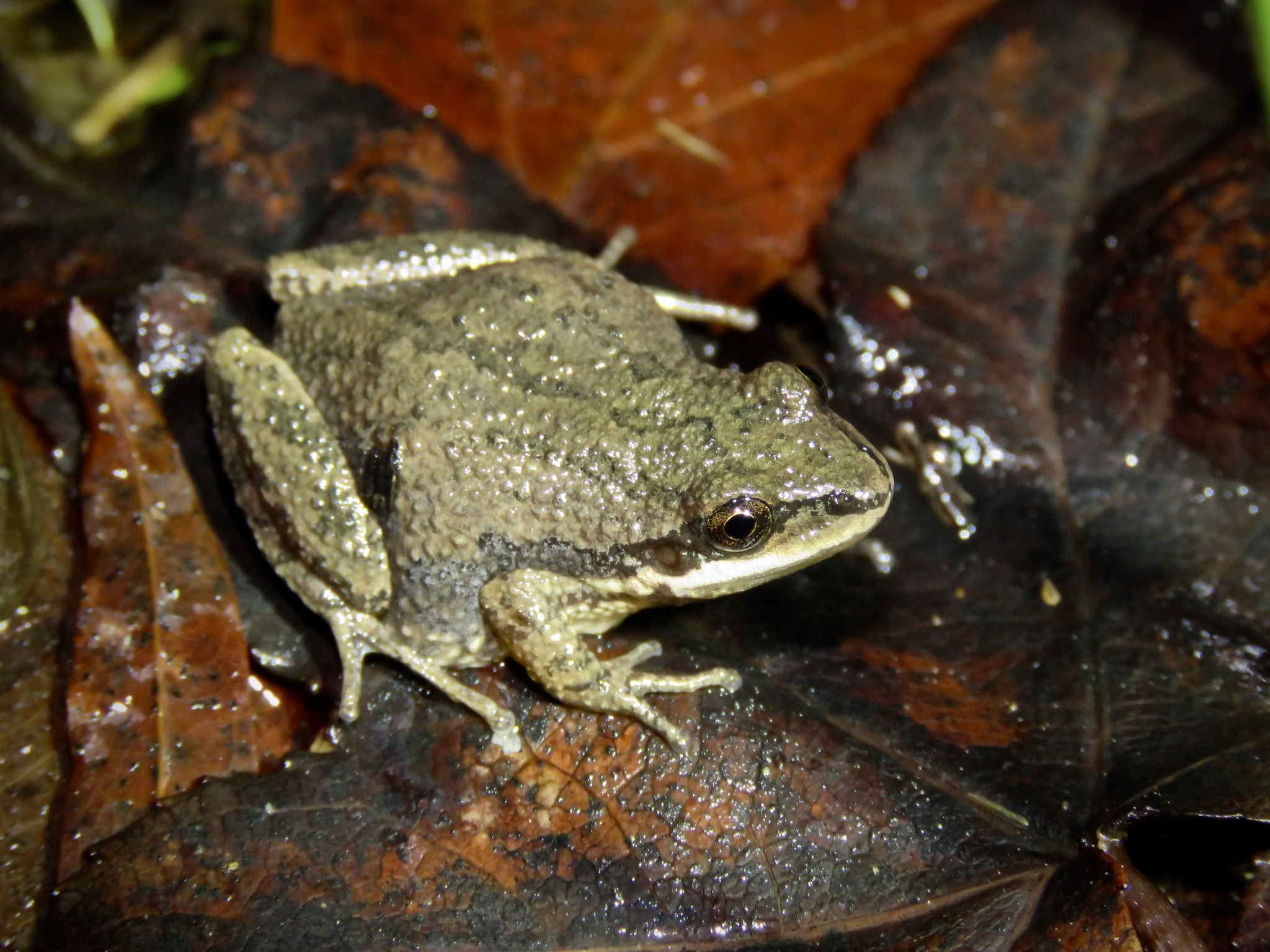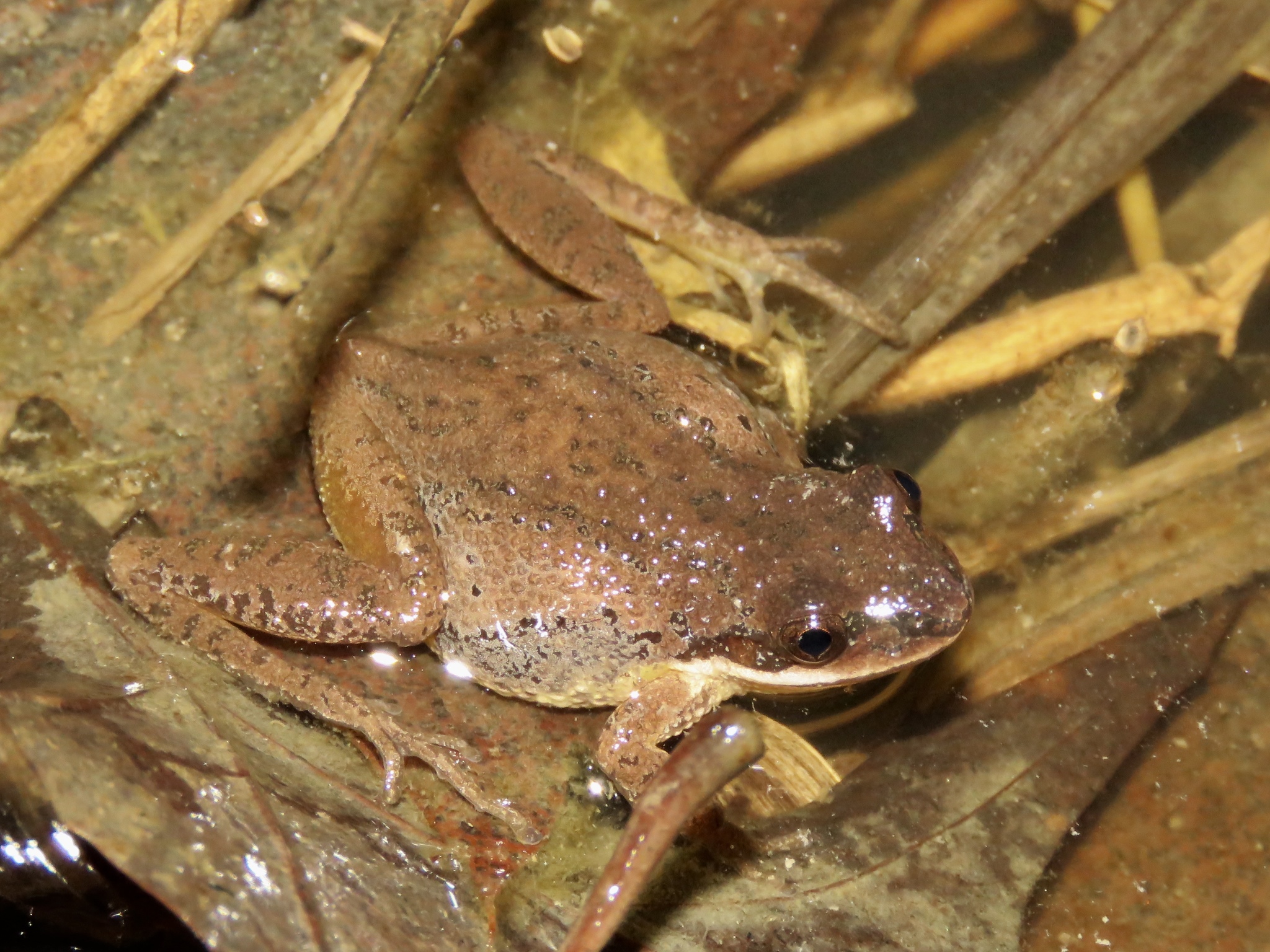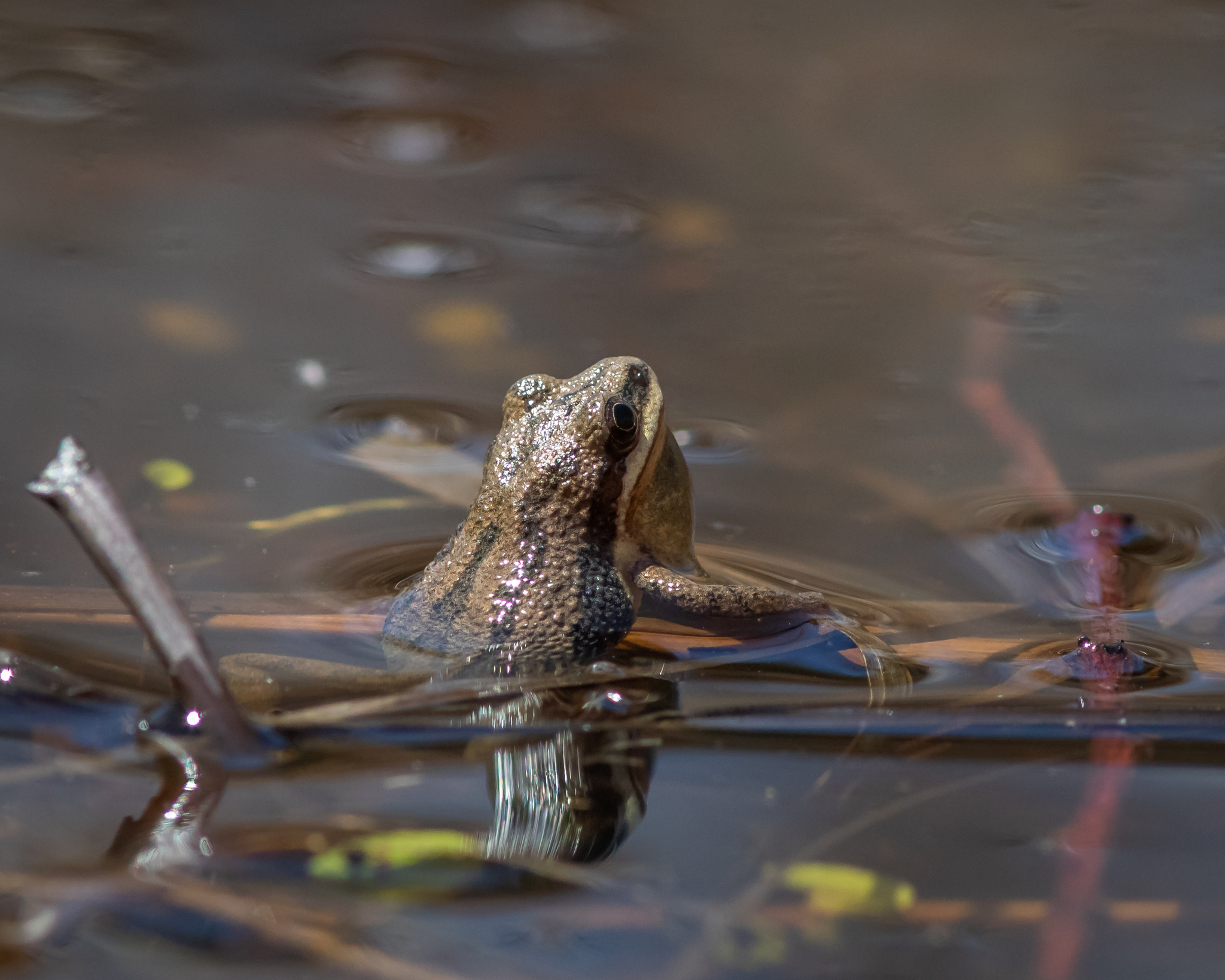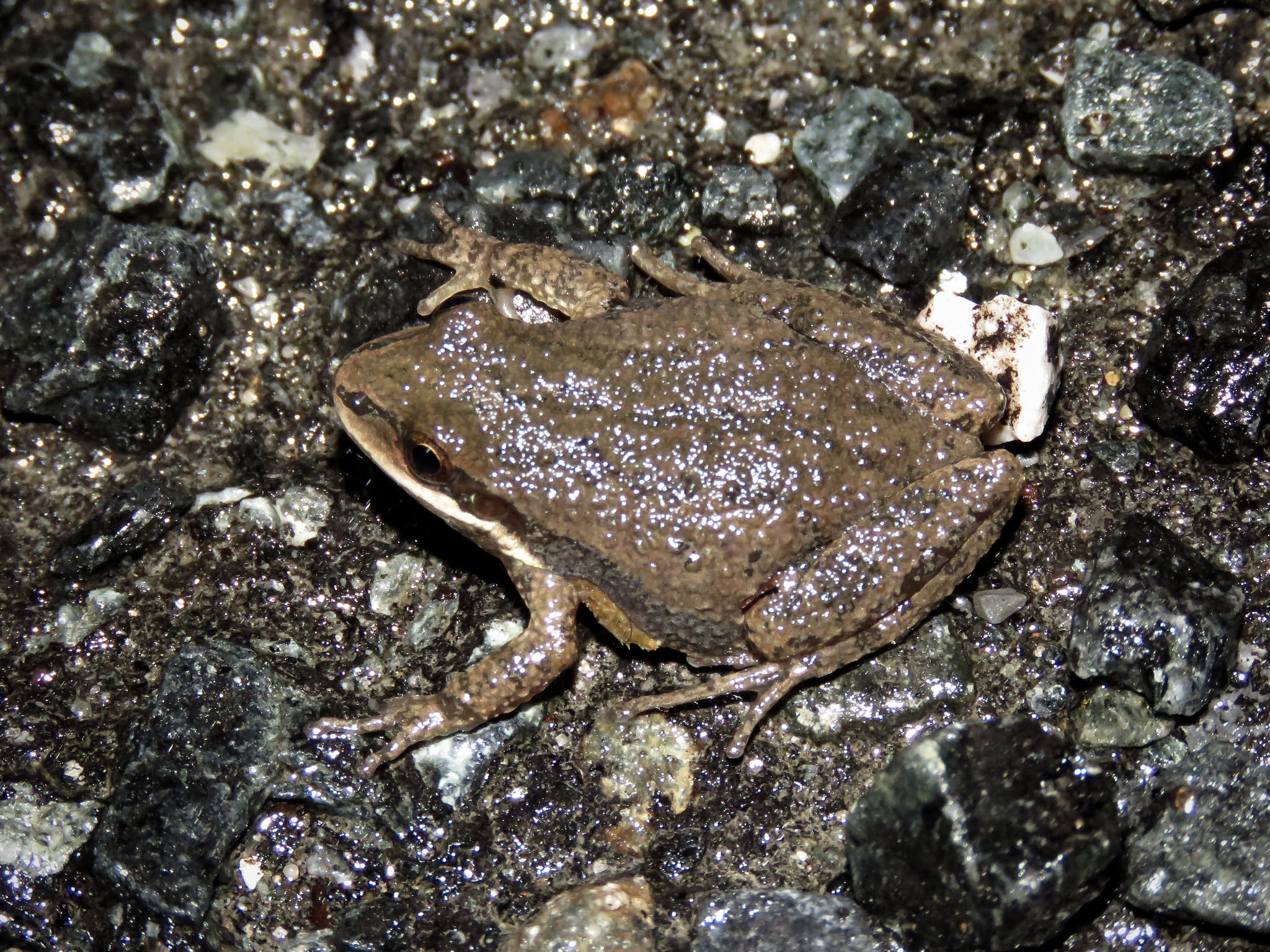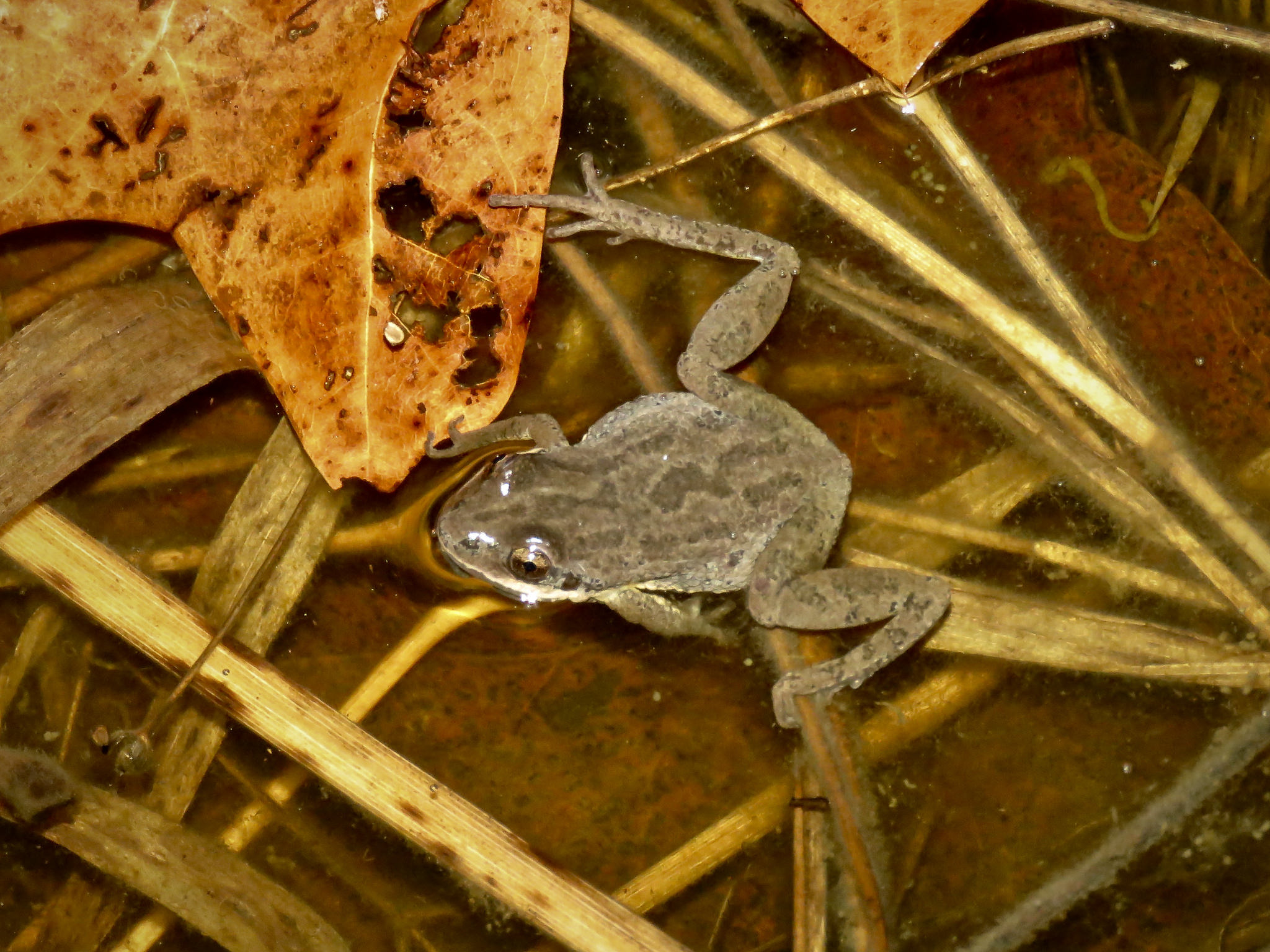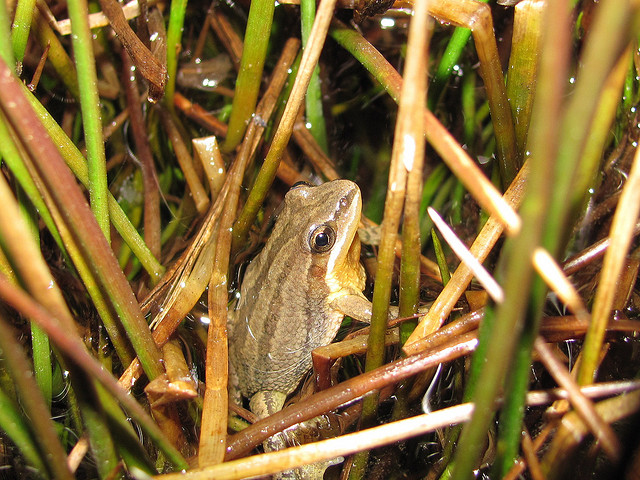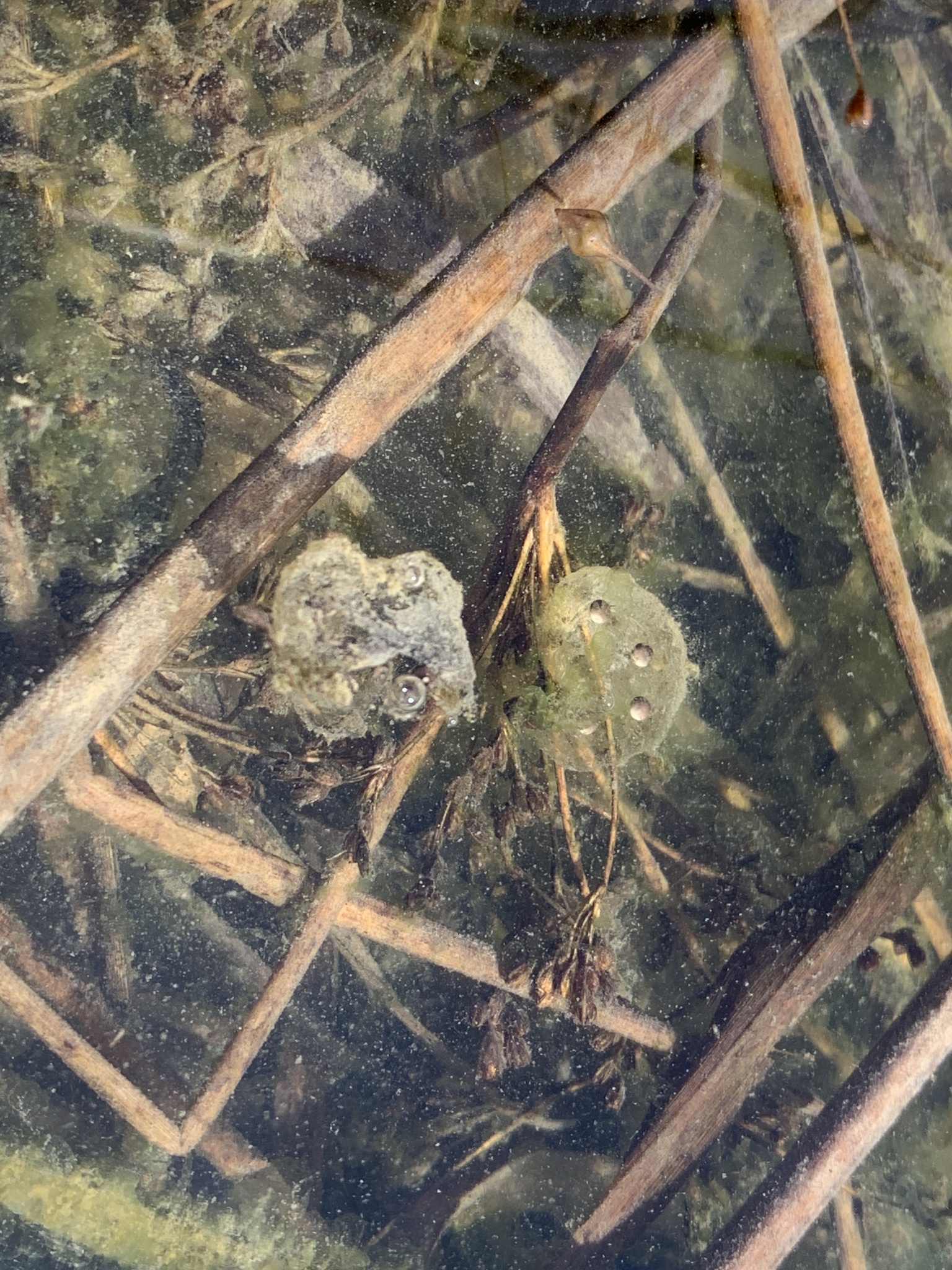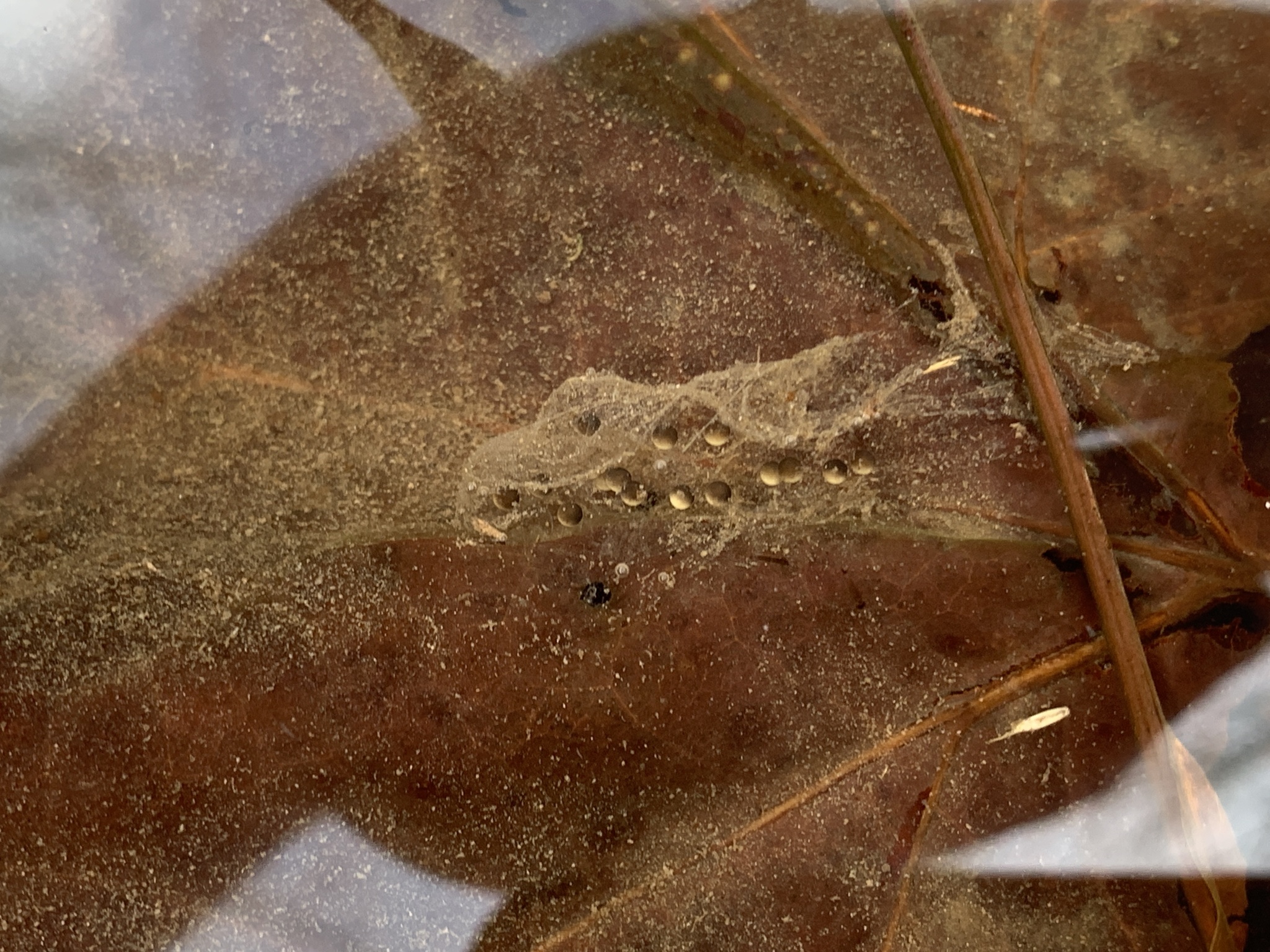Map Snapshot















96 Records
Upland Chorus Frog in Allegany Co., Maryland (4/6/2021). (c) tomfeild, some rights reserved (CC BY-NC). - Tom Feild.
Upland Chorus Frog in Allegany Co., Maryland (3/28/2023). (c) Mark Eanes, all rights reserved. - Mark Eanes.
Upland Chorus Frog in Allegany Co., Maryland (Date obscured). (c) Kyle Klotz, all rights reserved. - Kyle Klotz.
Upland Chorus Frog in Allegany Co., Maryland (4/4/2022). (c) Mark Eanes, all rights reserved. - Mark Eanes.
Upland Chorus Frog in Washington Co., Maryland (3/26/2023). (c) Frode Jacobsen, some rights reserved (CC BY-NC). - Frode Jacobsen.
Upland Chorus Frog (and Spring Peepers) in Allegany Co., Maryland (4/23/2022). (c) Josh Emm, some rights reserved (CC BY-NC). - Josh Emm.
Upland Chorus Frog in Allegany Co., Maryland (3/3/2024). (c) smuller, some rights reserved (CC BY-NC). - Sue Muller.
Status
Upland Chorus Frog (Pseudacris feriarium) is a small species of treefrog, closely related to several very similar chorus frog species in the same complex. This frog appears to be distributed through most of Maryland west of the Chesapeake Bay/Susquehanna River. East of Cheasapeake Bay, it appears to be replaced by the nearly identical New Jersey Chorus Frog (Pseudacris kalmi). This frog breeds in shallow, still or slow-moving bodies of water, including wet woodland, seasonal or vernal pools, and wet meadows or other grassy areas. The call is an ascending 'creeeeeek' like running a finger down the coarse teeth of a comb (Maryland DNR site; Conant & Collins, 1998).
Description
A tiny brown treefrog, with three variable darker longitudinal stripes down the back. Basically identical to New Jersey Chorus Frog, and difficult to distinguish except by range. Longitudinal stripes may average slightly thinner on this species.
Seasonality Snapshot
Source: Wikipedia
| Upland chorus frog | |
|---|---|

| |
| Scientific classification | |
| Domain: | Eukaryota |
| Kingdom: | Animalia |
| Phylum: | Chordata |
| Class: | Amphibia |
| Order: | Anura |
| Family: | Hylidae |
| Genus: | Pseudacris |
| Species: | P. feriarum
|
| Binomial name | |
| Pseudacris feriarum Baird, 1854
| |
| Synonyms | |
|
Pseudacris triseriata feriarum | |
The upland chorus frog (Pseudacris feriarum) is a species of chorus frog found in the United States. It was recently separated from the Western chorus frog (Pseudacris triseriata), being identified as an individual species rather than a subspecies. They are a rarely seen species, but their calls are frequently heard soon after rains in the spring time.[2]
Habitat
[edit]Within their range, this species is found in a variety of habitats that include: swampy areas of broad valleys, grassy swales, moist areas of woodlands and borders of heavily vegetated ponds.[3]
Description
[edit]Upland chorus frogs are usually brown, grey-brown, or reddish-brown in color, with darker blotching. They grow from 0.75–1.5 inches (1.9–3.8 cm) in size. A white line is present on the head, above the upper lip. Dorsally, there are 3 longitudinal lines which may be complete or broken into spots and a triangular spot on the head usually connects with the middle stripe.[3]
Geographic distribution
[edit]Found in the southern and eastern United States, the upland chorus frog is found from the state of New Jersey to the Florida panhandle; west to eastern Texas and southeast Oklahoma. In West Virginia their distribution is limited to the eastern panhandle and Ridge and Valley region where they are very rare and imperiled.[4]
Behavior
[edit]
Upland chorus frogs are secretive, freeze-tolerant,[3] nocturnal frogs, and are rarely seen (or heard) except immediately after rains. Their chorus will vary depending on the area they are found within, because they have significantly different pulse patterns in many different locations across their distribution.[2] They are an almost entirely terrestrial species, and found in a variety of habitats, but usually moderately moist, vegetated areas, not far from a permanent water source. Like most frogs, they are insectivorous. Breeding occurs throughout the year, but most frequently during the cooler, more rainy periods from November to March. Eggs are laid in clusters of 60 or so, and females will lay 197–835 eggs (average 441.314 ± 50.26).[5] Breeding sites are typically small temporary pools and puddles in grassy fields; they do not breed in permanent water.[6] The female can lay upwards of 1,000 eggs at a time. The egg period lasts from 3–17 days, followed by a larval period of 5.1 weeks.[3]
Conservation status
[edit]The upland chorus frog is listed as a protected species in the state of New Jersey, primarily due to habitat destruction. Because of its restrictive habitat preferences, this species is declining in several states, particularly in areas where roadside ditches and other ephemeral pools are being drained or destroyed for new developments.
References
[edit]- ^ IUCN SSC Amphibian Specialist Group (2021). "Pseudacris feriarum". IUCN Red List of Threatened Species. 2021: e.T55893A118979646. doi:10.2305/IUCN.UK.2021-3.RLTS.T55893A118979646.en. Retrieved 5 December 2022.
- ^ a b Malone, John H.; Ribado, Jessica; Lemmon, Emily Moriarty (May 2014). "Sensory drive does not explain reproductive character displacement of male acoustic signals in the upland chorus frog (Pseudacris feriarum)". Evolution; International Journal of Organic Evolution. 68 (5): 1306–1319. doi:10.1111/evo.12366. PMID 24475782. S2CID 205123385.
- ^ a b c d Sias, Jaime (2006). Natural History and distribution of the upland chorus frog, Pseudacris feriarum Baird, in West Virginia (Thesis). ProQuest 304934126.
- ^ Albaugh, Scott (2008-01-01). "Habitat Comparison of Pseudacris f. feriarum and Pseudacris c. crucifer with Emphasis on Associated Plant Communities and Distribution of Clemmys guttata and Pseudacris f. feriarum in West Virginia". Theses, Dissertations and Capstones.
- ^ Mitchell, Joseph A.; Pague, Christopher A. (2014). "FILLING GAPS IN LIFE-HISTORY DATA: CLUTCH SIZES FOR 21 SPECIES OF NORTH AMERICAN ANURANS" (PDF). Herpetological Conservation and Biology. 9 (3): 495–501.
- ^ Ethier, Jeffrey P.; Fayard, Aurore; Soroye, Peter; Choi, Daeun; Mazerolle, Marc J.; Trudeau, Vance L. (27 August 2021). "Life history traits and reproductive ecology of North American chorus frogs of the genus Pseudacris (Hylidae)". Frontiers in Zoology. 18 (1): 40. doi:10.1186/s12983-021-00425-w. hdl:10393/42605. PMC 8394169. PMID 34452622. S2CID 255962312.
- IUCN SSC Amphibian Specialist Group (2021). "Pseudacris feriarum". IUCN Red List of Threatened Species. 2021: e.T55893A118979646. doi:10.2305/IUCN.UK.2021-3.RLTS.T55893A118979646.en. Retrieved 5 December 2022. Database entry includes a range map and a brief justification of why this species is of least concern.
- IUCN RangeMap: Pseudacris feriarum
- Virginia Department of Game & Inland Fisheries: Upland Chorus Frog
- Frogs and Toads of Georgia: Upland Chorus Frog
